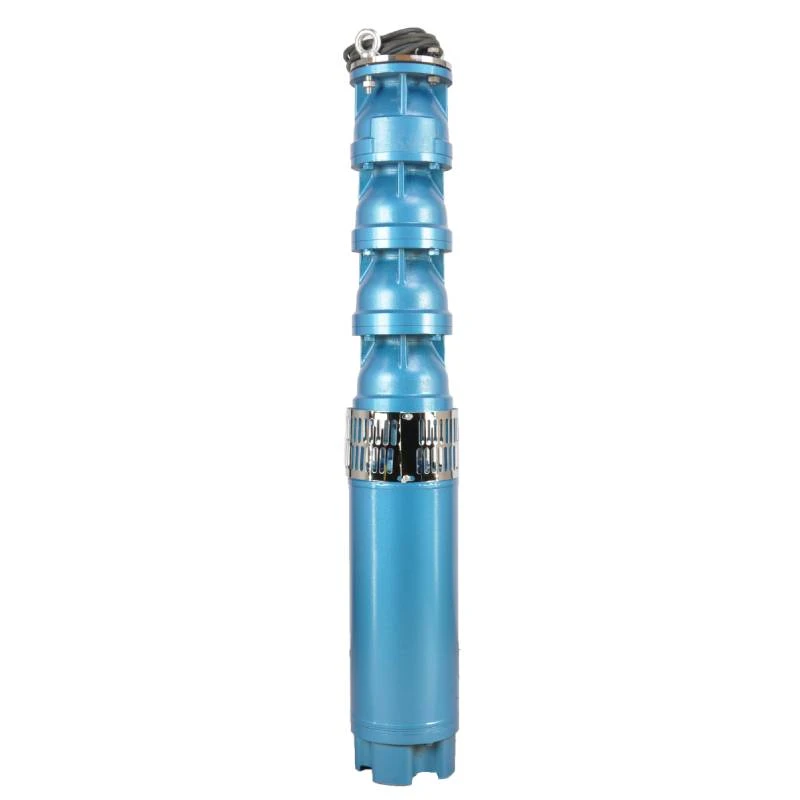Aug . 11, 2024 16:38 Back to list
Exploring the Advantages and Applications of Deep Bore Submersible Pump Technology for Efficient Water Extraction
Deep Bore Submersible Pumps An Overview
Deep bore submersible pumps are specialized hydraulic devices designed to lift water from significant depths. These pumps are typically submerged in boreholes or wells and consist of a pump unit and a motor, which work together to move water from underground aquifers to the surface. Due to their efficiency and reliability, deep bore submersible pumps are widely used in various applications, including agriculture, municipal water supply, industrial processes, and groundwater extraction.
Design and Functionality
The principal components of a deep bore submersible pump include the pump bowl assembly, motor, motor protector, and discharge head. The pump bowl assembly contains multiple stages of impellers and diffusers, which work in tandem to enhance hydraulic performance. As the motor drives the impellers, water is drawn into the pump and pushed upward through the stages, increasing the pressure and enabling the water to reach the surface.
One of the key features of deep bore submersible pumps is their ability to operate at great depths, often exceeding hundreds of meters. The motor, typically designed to be water-cooled, allows the pump to function efficiently underwater without overheating. Additionally, the entire assembly is hermetically sealed, protecting it from contaminants and ensuring a long operational life in challenging environments.
Applications
Deep bore submersible pumps are employed in various sectors. In agriculture, they play a critical role in irrigation systems, delivering essential water supplies to fields even in remote locations with limited access to surface water. Municipal water supply systems also rely on these pumps to provide potable water to urban populations. For industrial applications, they are used in processes like mining, cooling systems, and chemical production, where consistent and reliable water extraction is crucial.
Another important application is groundwater management, where these pumps help in dewatering projects and maintaining water levels in lakes and ponds. As many regions face water scarcity due to climate change and population growth, the reliable extraction and management of groundwater resources become ever more critical.
deep bore submersible pumps

Advantages
One of the primary advantages of deep bore submersible pumps is their efficiency. They can deliver high flows at significant depths with minimal energy consumption compared to other types of pumps. Furthermore, because they are submerged, noise levels are significantly reduced, making them suitable for residential and urban applications where noise pollution is a concern.
Additionally, deep bore submersible pumps have a compact design that requires less surface space, allowing for easier installation in narrow boreholes. Their durability and ability to operate in harsh conditions also contribute to lower maintenance costs and longer life spans, making them a cost-effective solution over time.
Challenges and Considerations
While deep bore submersible pumps offer numerous benefits, there are challenges to be aware of. Proper sizing and selection are critical to ensure optimal performance, as an incorrectly sized pump can lead to inefficiencies, increased energy consumption, and potential damage to the pump itself. Additionally, factors such as water quality, including sediment and corrosive elements, can impact pump longevity and functionality.
Regular maintenance is also essential to prevent common issues, including pump jamming and electrical failures. Operators must be knowledgeable about their specific pumping systems and should conduct routine inspections to ensure continued efficiency and performance.
Conclusion
Deep bore submersible pumps are invaluable assets in the management and supply of water in various applications. Their efficiency, durability, and capability to operate at significant depths make them a preferred choice for many industries facing the challenges of water extraction and management. As the global demand for freshwater continues to rise, the significance of these pumps will undoubtedly grow, emphasizing the need for ongoing advancements in technology and best practices to maximize their potential.
-
Submersible Water Pump: The Efficient 'Power Pioneer' of the Underwater World
NewsJul.01,2025
-
Submersible Pond Pump: The Hidden Guardian of Water Landscape Ecology
NewsJul.01,2025
-
Stainless Well Pump: A Reliable and Durable Pumping Main Force
NewsJul.01,2025
-
Stainless Steel Submersible Pump: An Efficient and Versatile Tool for Underwater Operations
NewsJul.01,2025
-
Deep Well Submersible Pump: An Efficient 'Sucker' of Groundwater Sources
NewsJul.01,2025
-
Deep Water Well Pump: An Efficient 'Sucker' of Groundwater Sources
NewsJul.01,2025
-
 Submersible Water Pump: The Efficient 'Power Pioneer' of the Underwater WorldIn the field of hydraulic equipment, the Submersible Water Pump has become the core equipment for underwater operations and water resource transportation due to its unique design and excellent performance.Detail
Submersible Water Pump: The Efficient 'Power Pioneer' of the Underwater WorldIn the field of hydraulic equipment, the Submersible Water Pump has become the core equipment for underwater operations and water resource transportation due to its unique design and excellent performance.Detail -
 Submersible Pond Pump: The Hidden Guardian of Water Landscape EcologyIn courtyard landscapes, ecological ponds, and even small-scale water conservancy projects, there is a silent yet indispensable equipment - the Submersible Pond Pump.Detail
Submersible Pond Pump: The Hidden Guardian of Water Landscape EcologyIn courtyard landscapes, ecological ponds, and even small-scale water conservancy projects, there is a silent yet indispensable equipment - the Submersible Pond Pump.Detail -
 Stainless Well Pump: A Reliable and Durable Pumping Main ForceIn the field of water resource transportation, Stainless Well Pump has become the core equipment for various pumping scenarios with its excellent performance and reliable quality.Detail
Stainless Well Pump: A Reliable and Durable Pumping Main ForceIn the field of water resource transportation, Stainless Well Pump has become the core equipment for various pumping scenarios with its excellent performance and reliable quality.Detail
